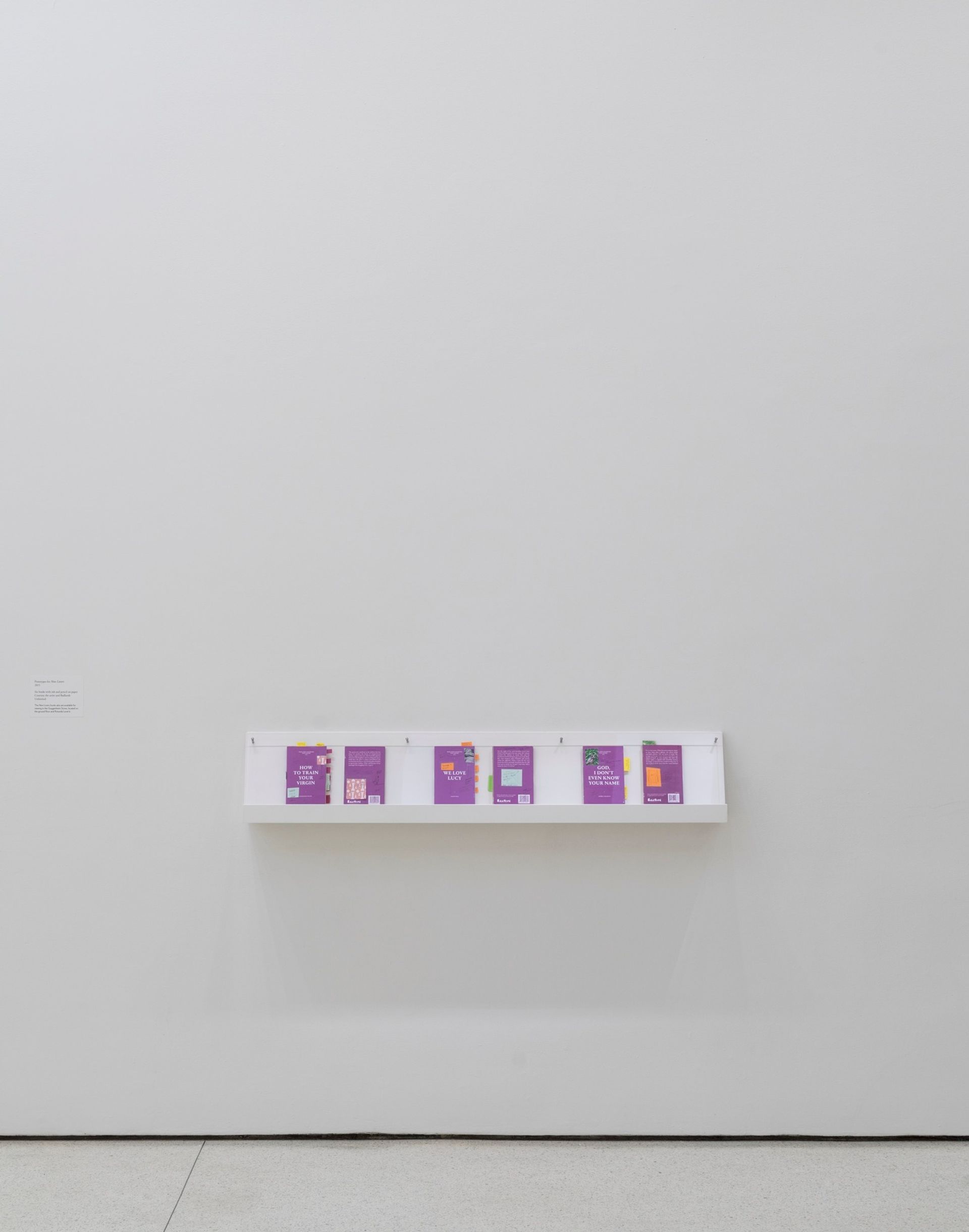There is so little on view in Paul Chan’s Hugo Boss Prize exhibition at the Guggenheim Museum in New York that it feels more like a gallery show than a museum exhibition—but only in scale, not in ambition. Chan is not a prolific artist. For a number of years, he has focused on his publishing house, Badlands Unlimited, and this is his first New York show in six years. It includes three “non-projection” installations of projectors screening digital videos, but they are not directed to a wall or a screen, leaving the video as a shimmering light in the lens. Although almost anything could be called a “non-projection,” the three installations Chan is showing are still surprising: devoid of imagery, they are another exploration of Chan’s consistent examination of what art looks like.
One non-projection, Play Doh, 2013, includes electric cords strewn around the floor that are hooked up to sockets set in six shoes cast in cement. Two other installations are similar: Die All Jennies 1, 2013, has a single projector placed atop a piece of cardboard that is connected to just one cement-filled shoe, and Sock N Tease, 2013, forms a circle (a pun on an electric circuit?) made of two projectors, two shoes, and the cords that connect them. (The titles are all facetious homonyms: Play Doh stands for Plato, Die All Jennies 1 is Diogenes and Sock N Tease is Socrates.) The non-projections are a move away from two other approaches to projection Chan has previously been hailed for: large-scale animated video work, like Happiness (Finally) After 35,000 Years of Civilization—After Henry Darger and Charles Fourier, 1999–2003, in which Darger’s nymphean girls are projected onto an eight-foot-long paper screen and 7 Lights, 2005–07, a series of digital projections in which shadows take central role over light. Though the lights make reference to 9/11 and the US involvement in the Middle East, they first and foremost are an exploration of the ends of the image.

Apart from the three non-projection works are two other pieces: Tetra Gummi Phone, 2014–15, is a wall-mounted sculpture made of fans and nylon fabric. It is reminiscent of an inflatable advertising air dancer (the kind you see outside a used car lot boasting a sale), but it doesn’t form a closed shape, so that air is constantly flowing away from the sculpture and into the exhibition space. The noise of the fans makes a soundtrack for the show and the constant motion of the nylon echoes the electrical currents flowing through the non-projections. But its flailing limbs also bring to mind the proofs for three erotica books published by Badlands Unlimited, which are also on view. Inspired by the French publisher Maurice Girodias’s Olympia Press, which was active in Paris in the 1950s and was the first to publish risqué novels like Vladimir Nabokov’s Lolita and William S. Burroughs’s Naked Lunch, Badlands Unlimited initiated “The New Lovers,” a series of erotic fiction. (The proofs of the books on view are complete with editorial notes like “[title] a little long, but I like it!” and “Font smaller!”)
The book proofs may not be earth-shattering to anyone who has worked in publishing, but their inclusion here points to the central role Badlands Unlimited takes in Chan’s work. The proofs demonstrate that the structure of a museum exhibition can be used not only to display art, but also to expand the borders of what is considered artistic production.
The non-projections themselves may be frustrating, but they make us rethink our expectations of what should be on view in a contemporary art museum. As much as contemporary art has moved away from objects hanging on walls, there is still a certain look that signals “contemporary art,” be it a high-production digital video projected onto a white wall or a 3D-printed sculpture. Chan’s non-projections are nothing like those. When art doesn’t conform to these codes, it calls attention to the way that conventions of presentation and circulation are otherwise confirmed time and again. These works may not always be visually enticing, but they make a contribution in pushing us to reconsider what art and look like and what it can be.
Paul Chan: Non-projections for New Lovers, Solomon R. Guggenheim Museum, New York, until 13 May

